83 Toilet papers

83 Toilet papers, 2020
carta igienica, cartapesta, gesso, dimensione variabile
toilet paper, papier mache, plaster, variable size
L'opera 83 Toilet Papers è composta da 83 carte igieniche ricoperte da gesso. La carta igienica è un oggetto usato quotidianamente nella vita comune, nella vita di tutti, un oggetto a cui non viene prestata attenzione, un oggetto utilizzato per un igiene intima, per pulirsi. In questo lavoro si vuole metaforicamente rappresentare un concetto di pulizia interiore. Il gesto effettuato è quello di ricoprire ed imbiancare le carte igieniche con qualcosa che le "immobilizza" (il gesso); lasciate al suolo come oggetto di riflessione, "nude" davanti all'osservatore, come dei contenitori pieni di tutto il marcio, il dolore che accompagna ogni singolo individuo. Il gesto è ripetitivo, un gesto ossessivo compulsivo in cui le cose sembrano non essere mai abbastanza. In cui le cose si ripetono per essere delineate, per essere chiarite, specificate, sottolineate o, ancora, si ripetono semplicemente per essere ripetute.
The 83 Toilet
Papers work is made up of 83 toilet papers and plaster. Toilet paper is
an object used daily in everyday life, in everyone's life, an object that is
not paid attention to, an object used for intimate hygiene, to clean oneself.
In this work we want to metaphorically represent a concept of inner cleansing.
The gesture performed is to cover and whiten the toilet papers with something
that "immobilizes" them (plaster); left on the ground as an object of
reflection, "naked" in front of the observer, like containers full of
all the rottenness, the pain that accompanies each individual. The gesture is
repetitive, an obsessive compulsive gesture in which things never seem to be
enough. In which things repeat themselves to be outlined, to be clarified,
specified, underlined or, again, they repeat themselves simply to be repeated.
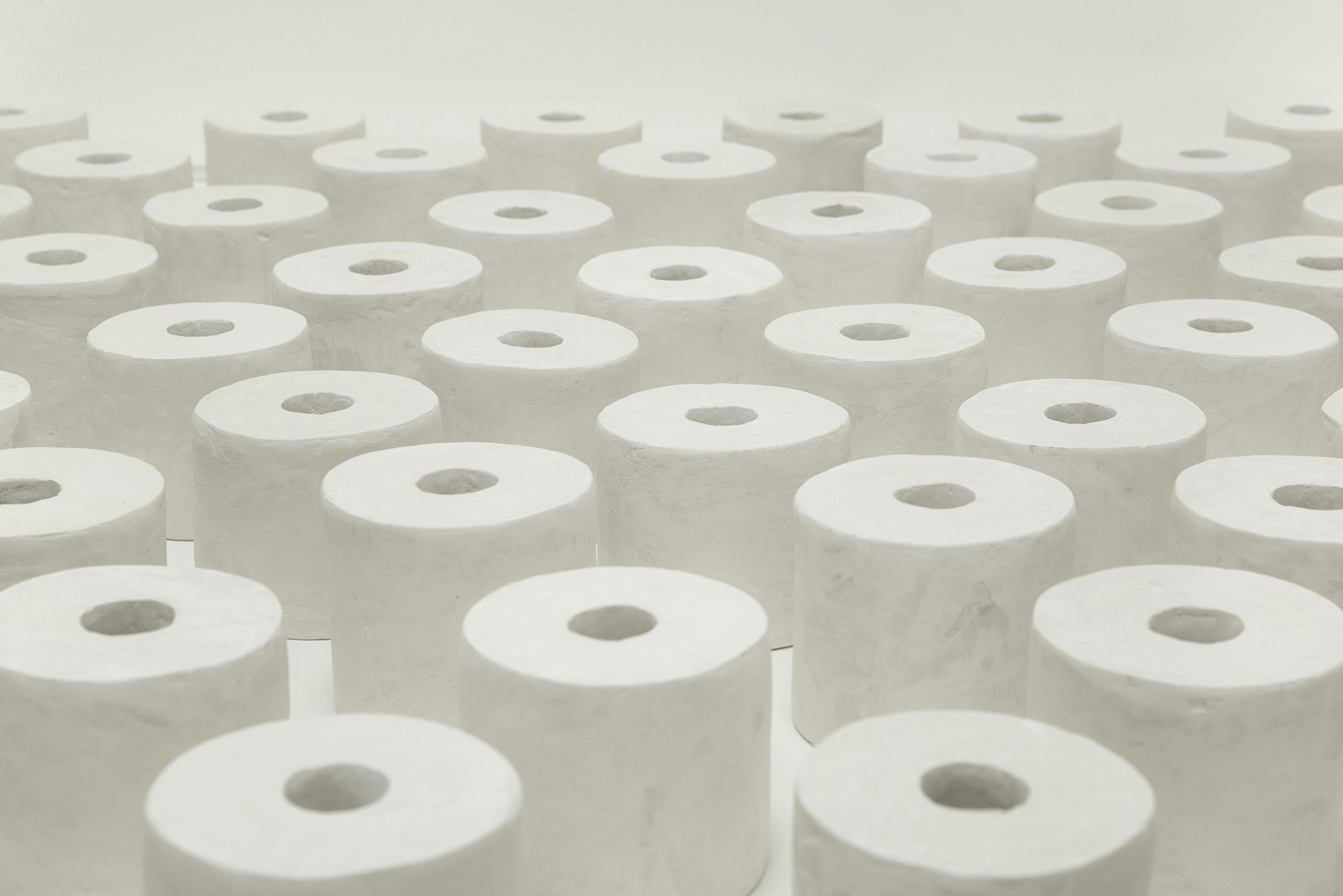
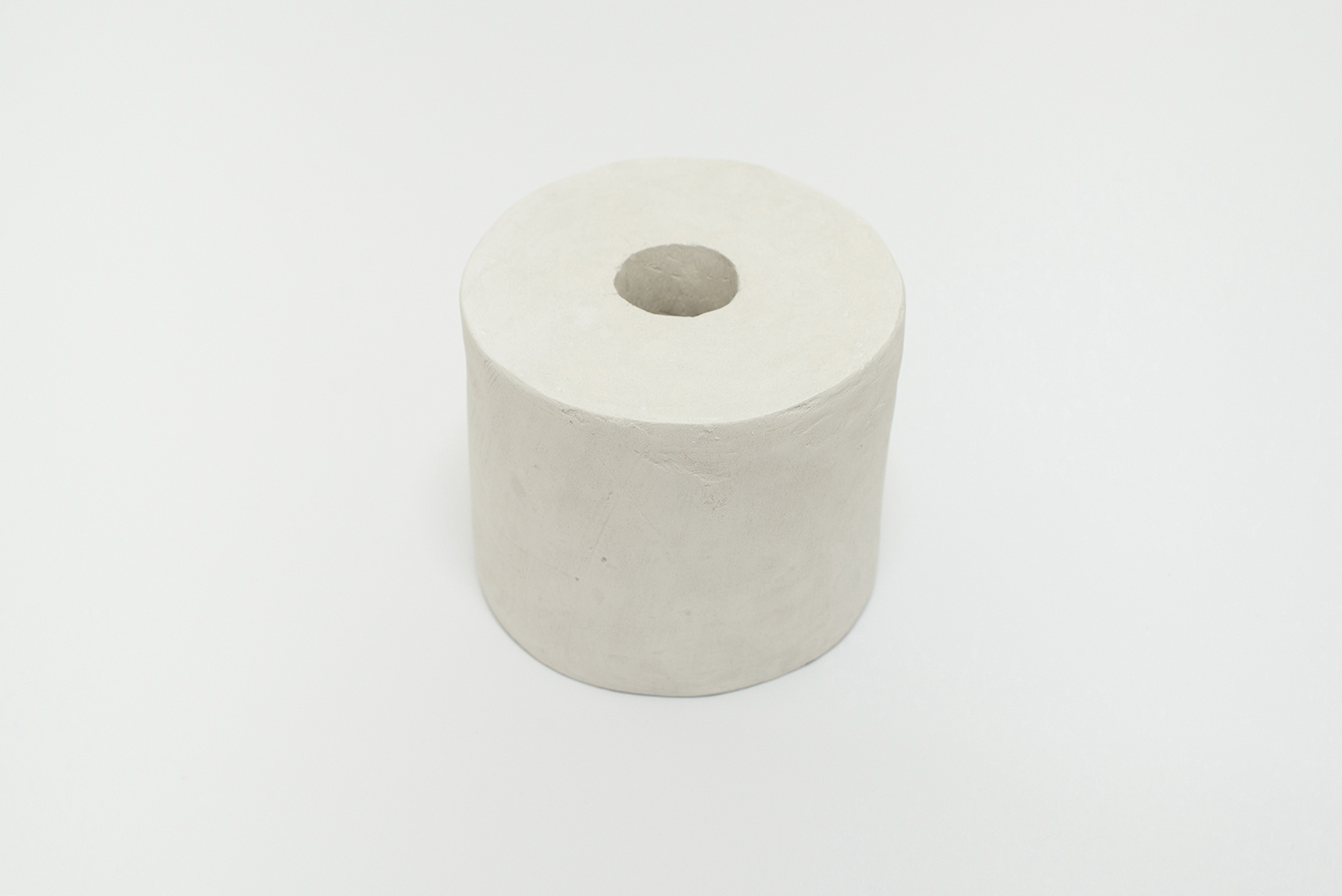
Wash your hands - soap

Wash your hands - soap, 2021
Cera - numero di saponette variabile - dimensioni variabili
Wax - variable number of soaps - variable dimensions
Wash your hands - soap è un lavoro fatto in cera. La cera in questo lavoro viene usata in maniera atipica: la saponetta formata inizialmente viene poi modificata e ricoperta con altra cera bollente nell'atto stesso del lavarsi le mani. Le saponette vengono poste sul pavimento in maniera causale. Il lavaggio delle mani è l'atto di pulire le mani allo scopo di rimuovere sporco, microrganismi o sostanze indesiderate. Le saponette sono nuove, usate, grandi, piccole, più o meno consumate. Esprimono dunque un atto di pulizia di cui metaforicamente abbiamo bisogno per affrontare o provare ad affrontare, metabolizzare un dolore, anche come una sorta di autodifesa in un periodo in cui il lavarsi le mani è diventato quasi un abitudine forzata, un atto di routine. L'idea di ripetere le stesse saponette più e più volte in diversi momenti della sua "vita", vuole marcare questa ciclicità in cui viviamo; questa ripetuta necessità di "liberarci dallo sporco" per poter iniziare da qualcosa di nuovo. Wash your hands - soap rielabora l'atto stesso del "lavarsi le mani" e trasfigura la pulizia esteriore in una vera e propria necessità interiore.
Wash your hands - soap is a work done in wax. The wax in this work is used in an atypical way: the soap formed initially is then modified and covered with other hot wax in the very act of washing hands. The bars of soap are placed on the floor in a causal manner. Hand washing is the act of cleaning the hands in order to remove dirt, microorganisms or unwanted substances. Soaps are new, used, large, small, more or less worn. They therefore express an act of cleaning that we metaphorically need to face or try to face, metabolize a pain, even as a sort of self-defense in a period in which washing hands has become almost a forced habit, a routine act. The idea of repeating the same bars of soap over and over again in different moments of his "life", wants to mark this cyclical nature in which we live; this repeated need to "get rid of the dirt" in order to start from something new. Wash your hands - soap re-elaborates the very act of "washing your hands" and transforms external cleansing into a real inner need.


Avvertenze e precauzioni


Avvertenze e preucazioni, 2021
testo su carta plastificata, 125x25
text on laminated paper, 125x25cm

Il bugiardino è il foglietto stampato che specifica la composizione, le caratteristiche terapeutiche e le avvertenze per l'uso del farmaco cui è annesso. Avvertenze e precauzioni è un lavoro composto da parti di bugiardini di diversi medicinali volti ad aiutare un problema, in questo caso, irrisolto. Vuole riflettere ed allo stesso tempo decontestualizzare alcune frasi ed alcune parole. Iniziare una cura, continuarla, non è mai facile. La precauzione più in generale, come atto diretto ad evitare pericoli imminenti o possibili, come avvertenza, attenzione, cautela, non è mai facile. L'attenzione è posta su brevi frasi, sul loro significato, sull'impatto che hanno o che possono avere con chi le legge.
The leaflet is the sheet that specifies the composition, therapeutic characteristics and warnings for the use of the drug to which it is attached. Avvertenze e precauzioni is a work composed of parts of leaflets of different medicines aimed at helping a problem, in this case, unresolved. He wants to reflect and at the same time decontextualize some sentences and some words. Starting a treatment, continuing it, is never easy. The precaution more generally, as a direct act to avoid imminent or possible dangers, such as warning, attention, caution, is never easy. The focus is on short sentences, their meaning, the impact they have or may have with those who read them.
Gold
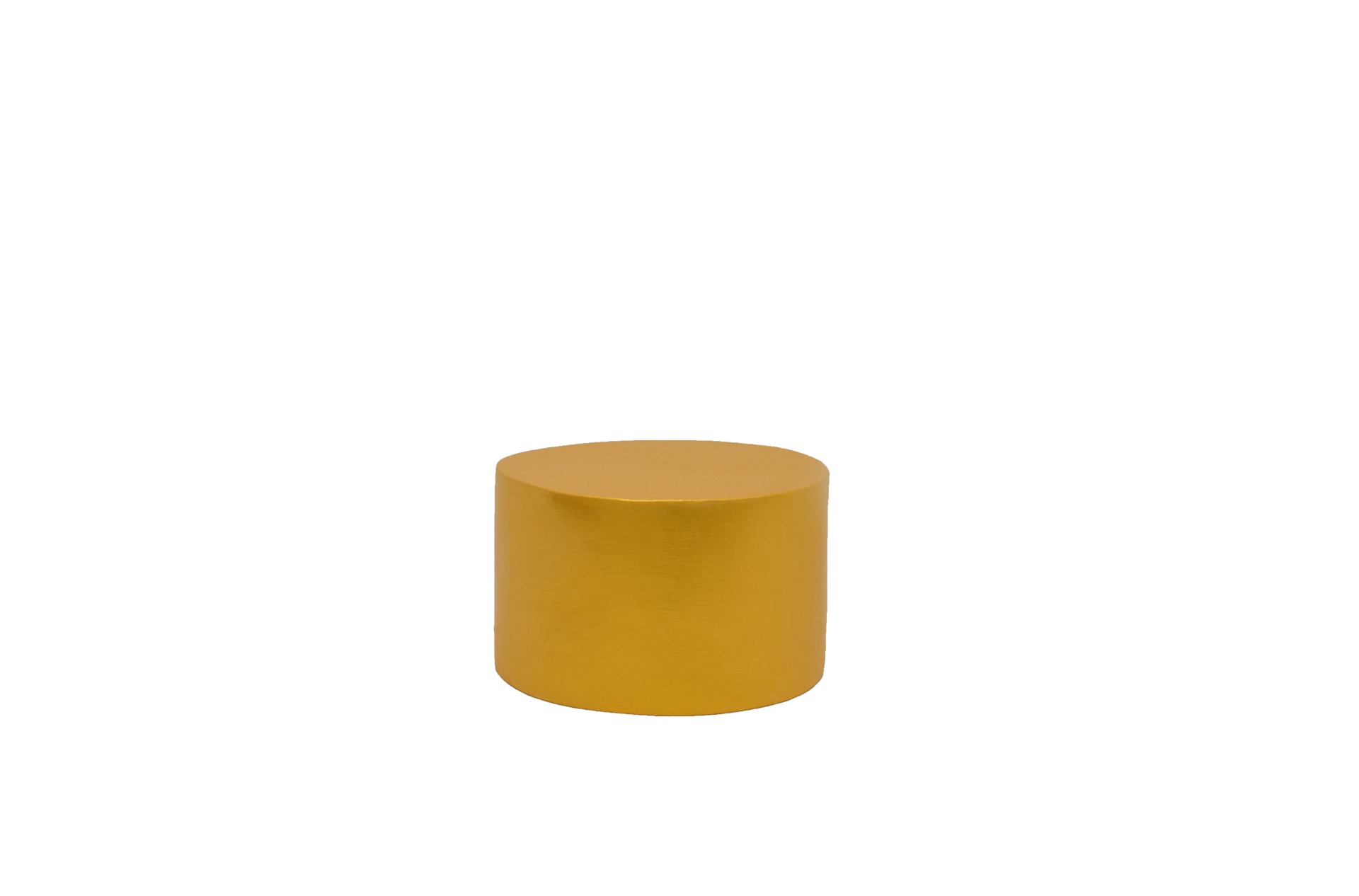
Gold, 2020
ferro, schiuma espansa, gesso, acrilico, 37,5x28cm
iron, foam, plaster, acrylic, 37,5x28cm
Gold è un cilindro, una superficie nello spazio tridimensionale definita da un'equazione polinomiale di secondo grado. E' rivestito da acrilico oro. Vuole raffigurare un'idea di materialità e ricchezza concentrata nella forma geometrica, posta al suolo per essere osservata.
Gold is a cylinder, a surface
in three-dimensional space defined by a second degree polynomial equation. It
is coated with gold acrylic. It wants to depict an idea of materiality and
richness concentrated in the geometric shape, placed on the ground to be
observed.
Senza titolo - 2 cilindri
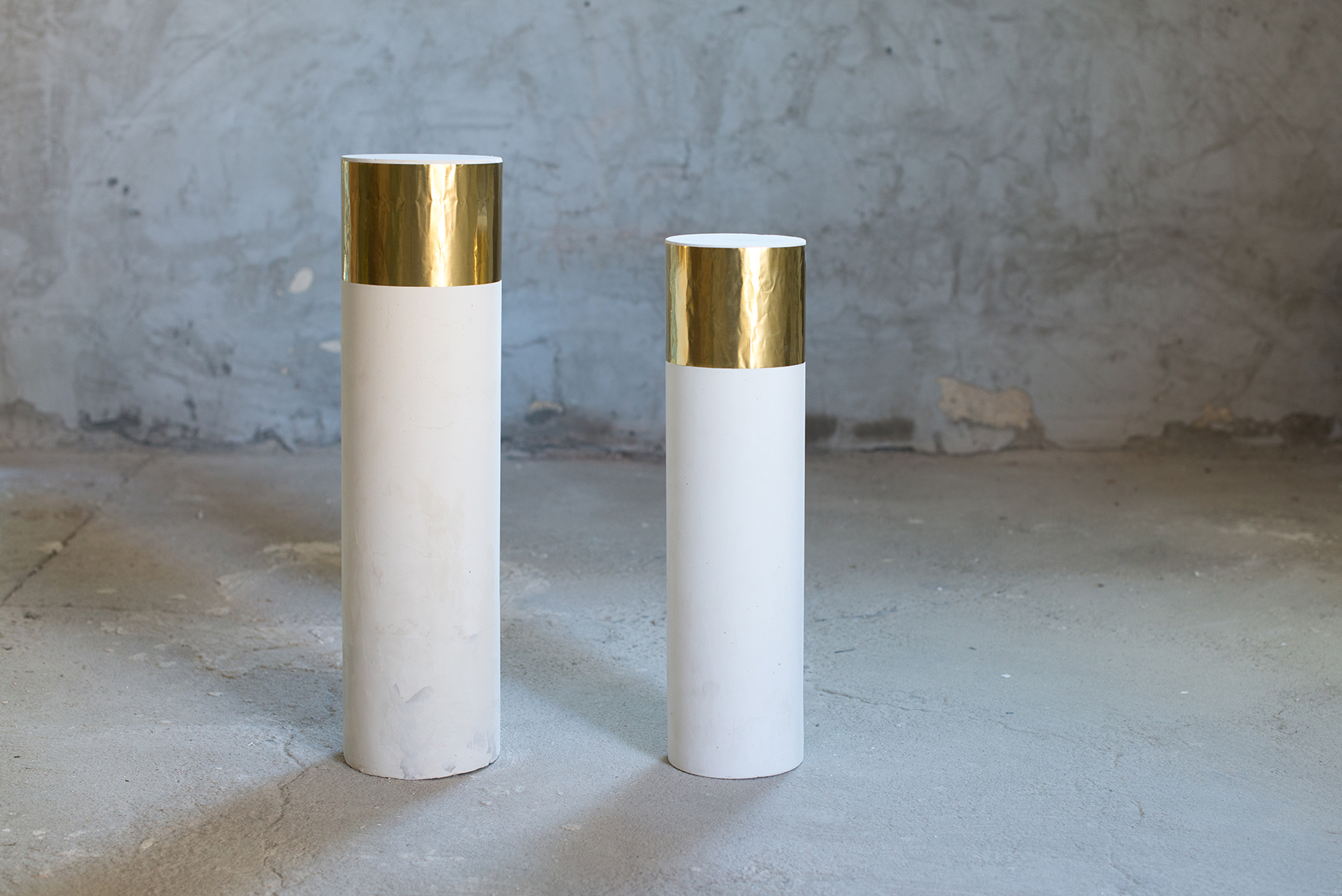
Senza titolo - 2 cilindri, 2021
cemento, lamina di ottone, 52,5x13,5cm - 46x16cm
concrete, brass foil, 52,5x13,5cm - 46x12cm
Questo lavoro è composto da due cilindri di cemento alla cui estremità superiore sono state applicate due lamine sottili di ottone. L'idea di apportare un rivestimento locale vuole far riflettere sul significato che visivamente tale modifica possa avere. I rivestimenti agiscono quotidianamente sul vivere ed inevitabilmente esalta sempre ciò che apparentemente è "più bello". E' così che nel lavoro il fruitore inevitabilmente tenderà a concentrarsi sul lato dorato.
This work is composed of two concrete cylinders to whose upper end two thin sheets of brass have been applied. The idea of making a local coating is intended to make us reflect on the visual meaning that this change can have. Coatings act daily on living and inevitably always enhances what is apparently "most beautiful". This is how the user will inevitably tend to focus on the golden side when working.
Elephant
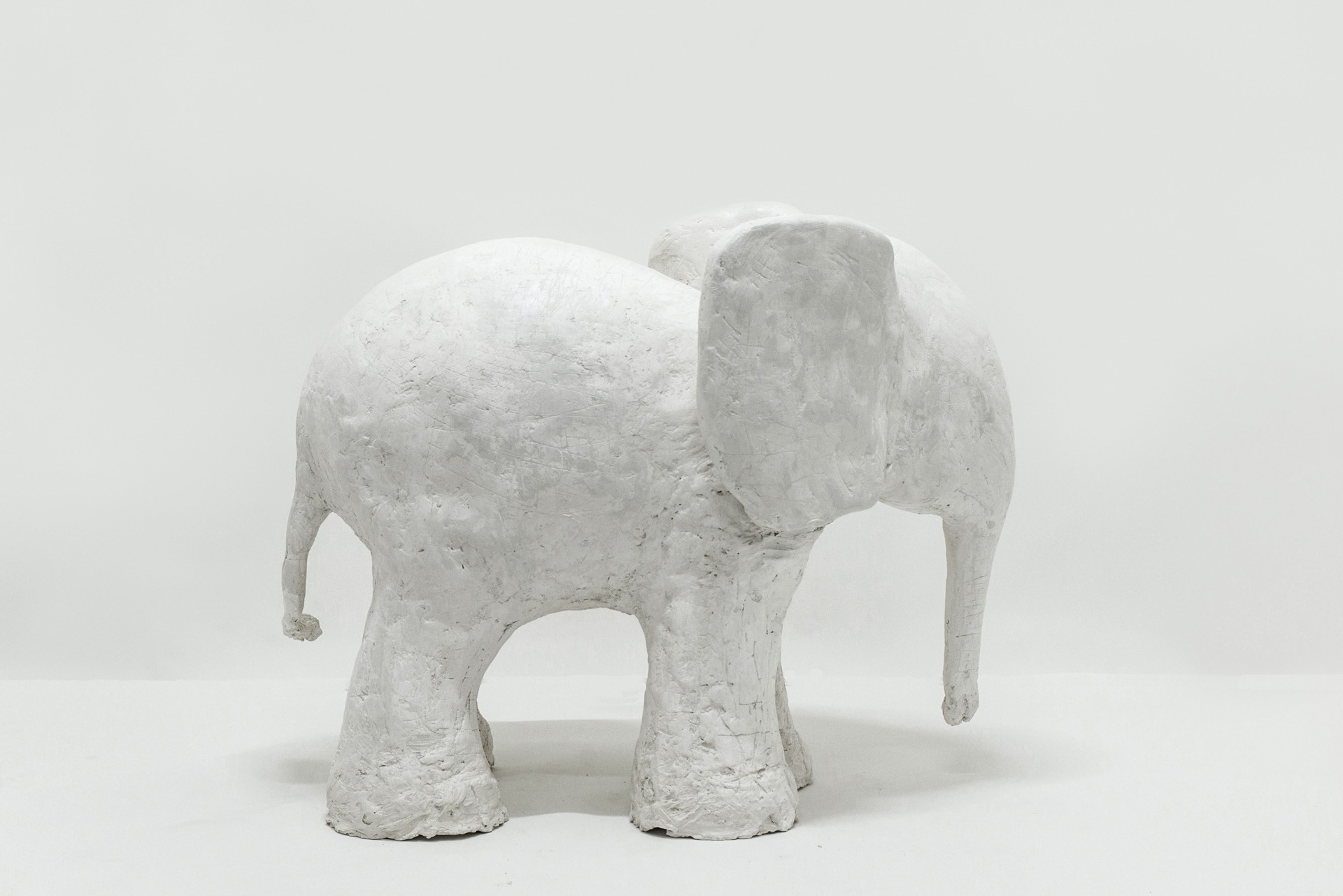
Elephant, 2020
Ferro, gesso, schiuma espansa, 100x80x50cm
Iron, plaster, foam, 100x80x50cm
Elefante: nome comune dei due mammiferi proboscidati tuttora
viventi (elephas macimus e Locodonta africana), detti più propriamente indiano
il primo ed africano il secondo perché diffusi rispettivamente in Asia ed in
Africa. È il più grande animale terrestre vivente.
Elephant è un'opera che vuole decontestualizzare l'elefante da qualsiasi comune
associazione, l'elefante riprodotto è un cucciolo, bianco, immobile, ripreso in
un momento di quiete; è posto in un luogo asettico dove la sua presenza diventa
un momento di riflessione e di confronto. L'elefante inevitabilmente rimanda
alla natura, ma qualcosa blocca questo collegamento; è la freddezza che
circonda il lavoro. Non vi è natura, ma una forma costruita riconducibile a
quella di un elefante, dove tutto è bianco, e può provocare stupore, nostalgia,
comprensione, tenerezza, ma in ogni caso resta là inerte e dei sentimenti che
possa provocare l'unica cosa sicuramente comune è che venga considerato un
elefante.
Elephant: common
name of the two proboscidean mammals still living (elephas macimus and
Locodonta africana), more properly called Indian the first and African the
second because they are diffused respectively in Asia and Africa. It is the
largest living land animal.
Elephant is a work that wants to decontextualize the elephant from any common
association, the elephant reproduced is a cub, white, motionless, taken in a
moment of quiet; it is placed in an aseptic place where its presence becomes a
moment of reflection and comparison. The elephant inevitably refers to nature,
but something blocks this connection; it is the coldness that surrounds the
work. There is no nature, but a built form that can be traced back to that of
an elephant, where everything is white, and can cause amazement, nostalgia,
understanding, tenderness, but in any case it remains there inert and feelings
that can cause the only thing surely it is common for it to be considered an
elephant.
Domino
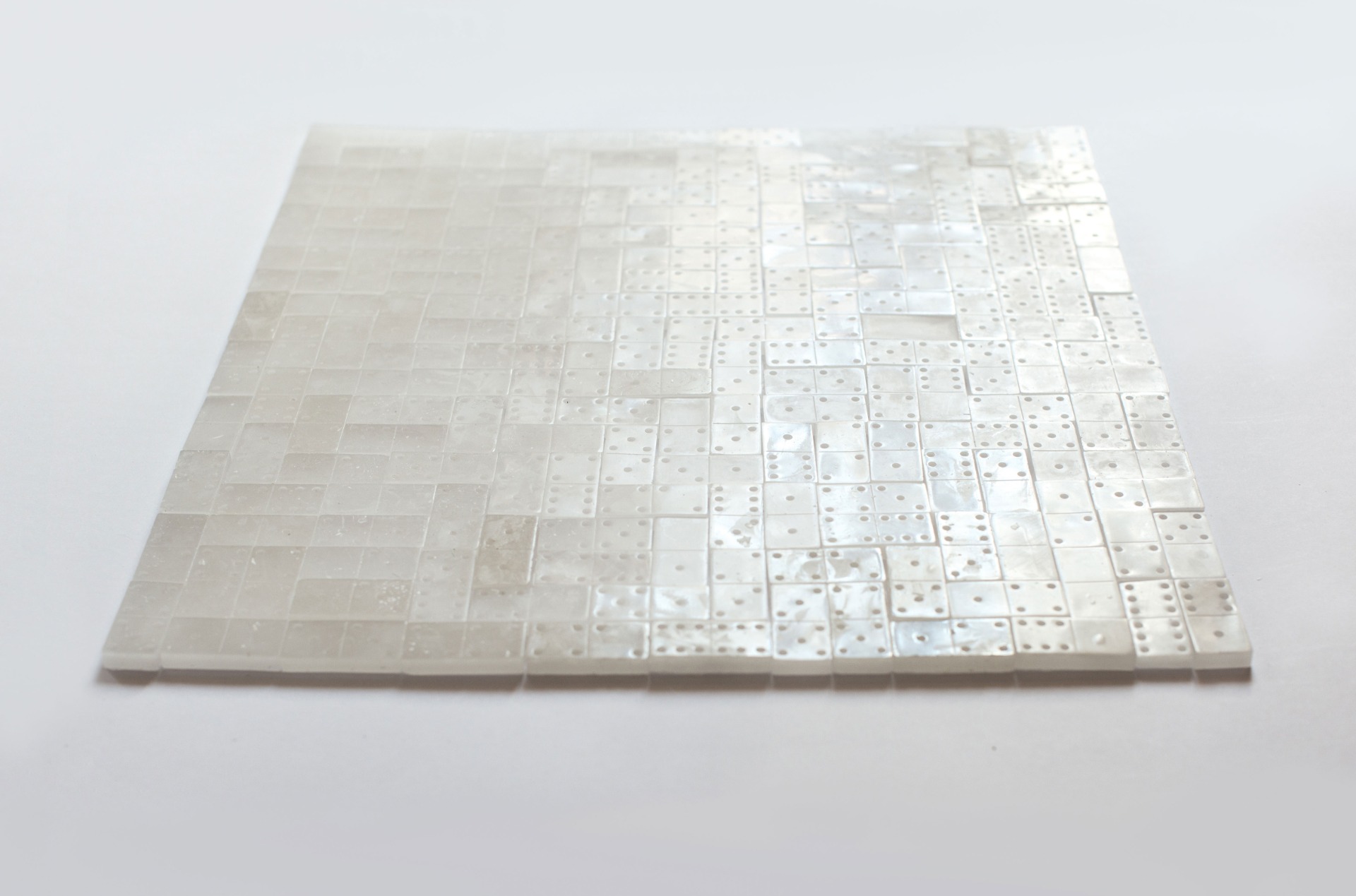
Domino, 2021
cera, dimensione variabile
wax, variable size
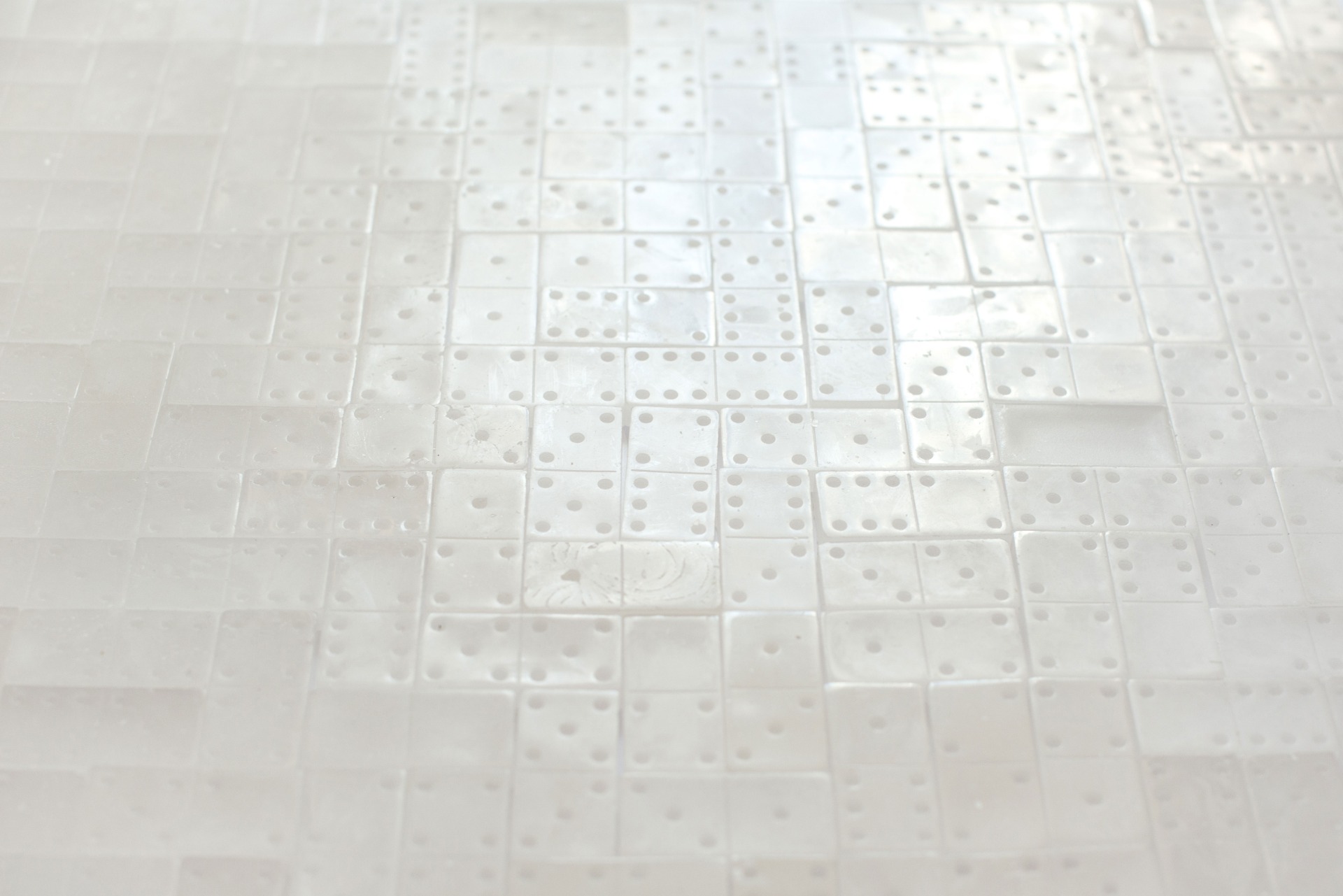
Il domino è un gioco da tavolo che si svolge utilizzando una serie di tessere. L'opera è formata dai pezzi stessi del domino riprodotti in cera, il tappeto che si viene a creare è un mosaico carico di possibilità. Un pavimento sul quale può essere riflessa la casualità delle cose, la loro consistenza materiale e la loro inafferrabilità. Un percorso designato dai numeri, casuale, ordinato e scomposto. L'opera può presentarsi in diverse modalità può essere un quadrato di possibilità o smontato e ricomposto.
Domino is a board game that is played using a series of tiles. The work is made up of the domino pieces themselves reproduced in wax, the carpet that is created is a mosaic full of possibilities. A floor on which the randomness of things, their material consistency and their elusiveness can be reflected. A path designated by numbers, random, ordered and broken up. The work can be presented in different ways it can be a square, or taken apart and reassembled.
To built a place

To built a place, 2021
legno, vernice, bomboletta spray
18 pezzi, dimensione variabile
wood, paint, spray can
18 pieces, variable size
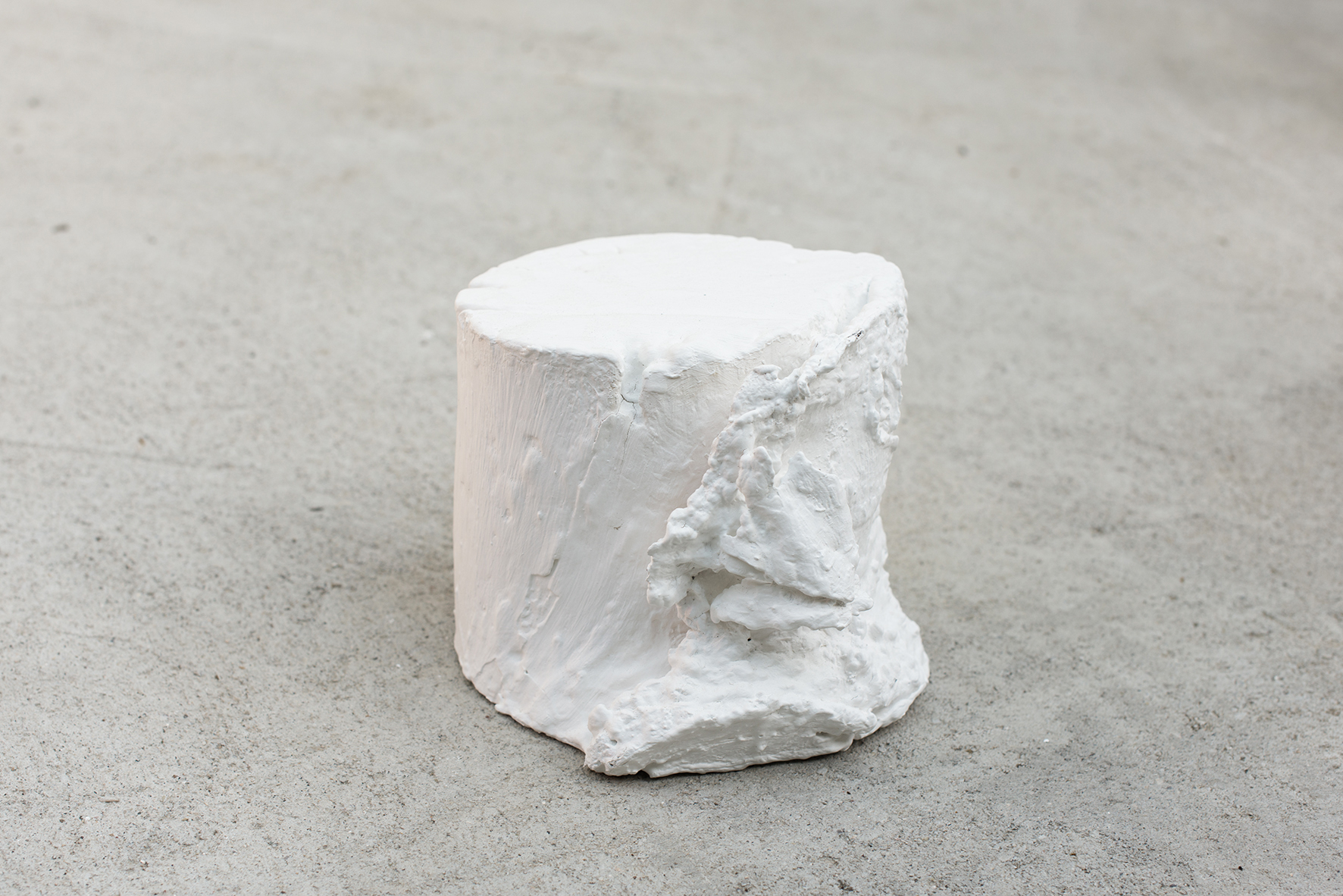
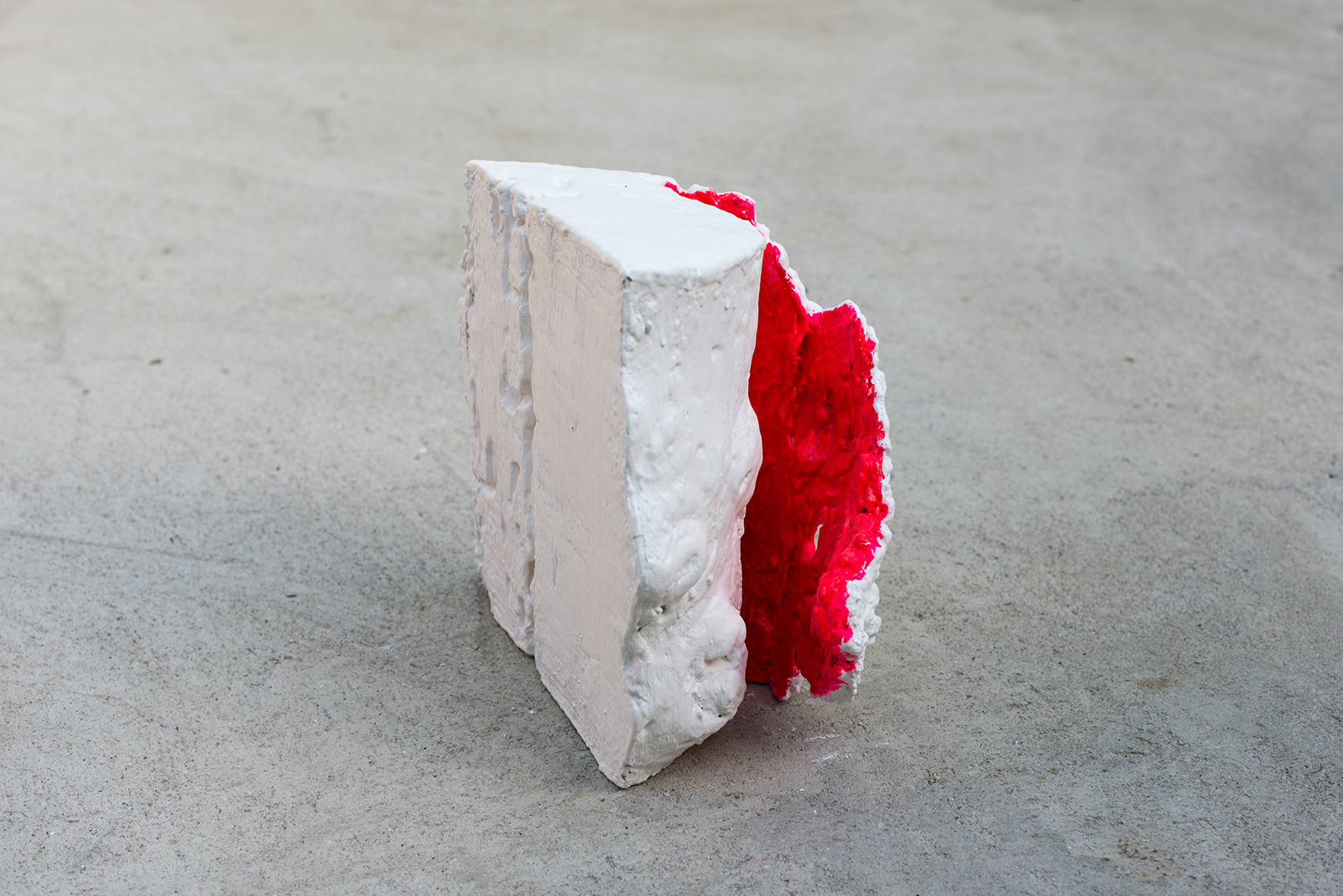

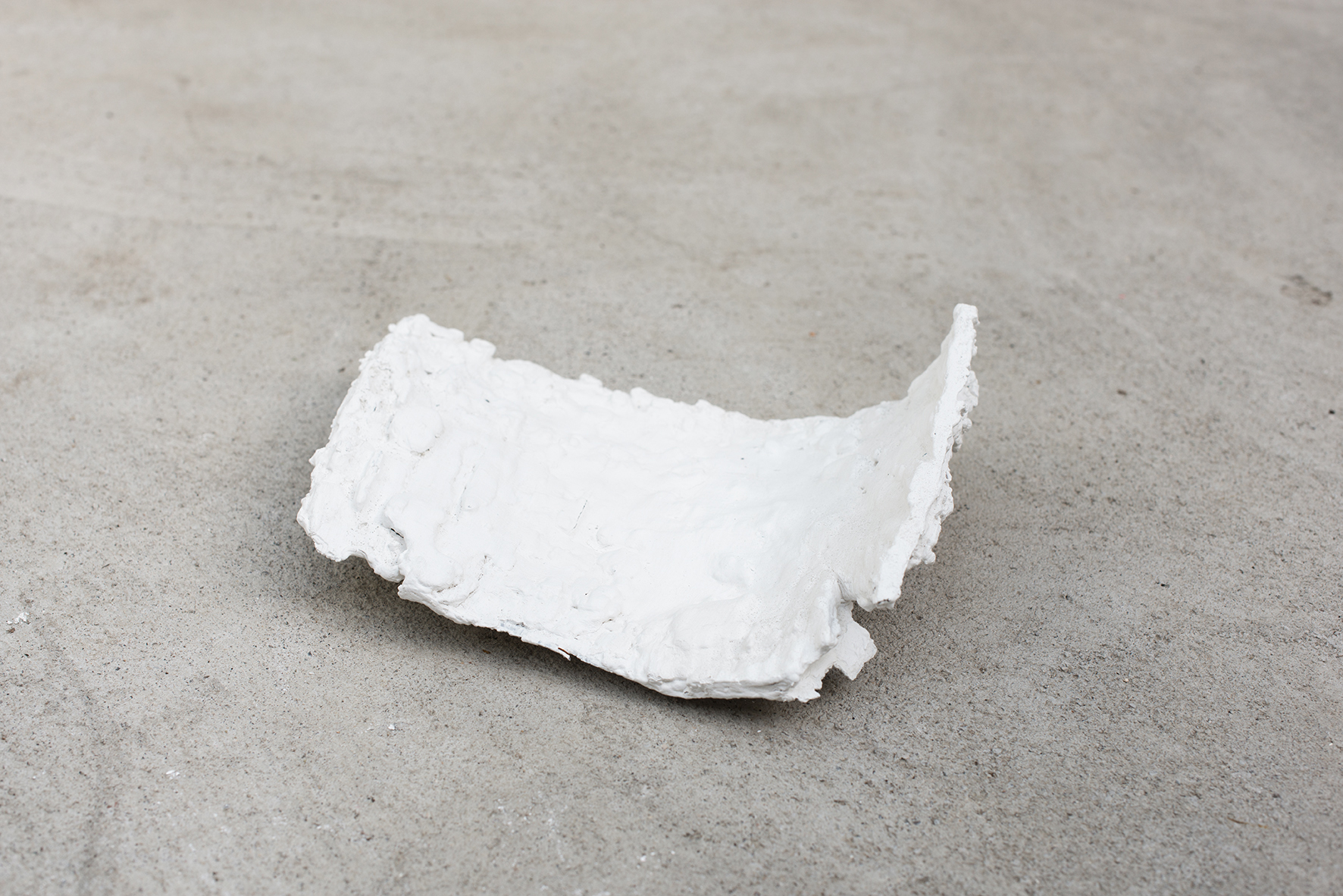
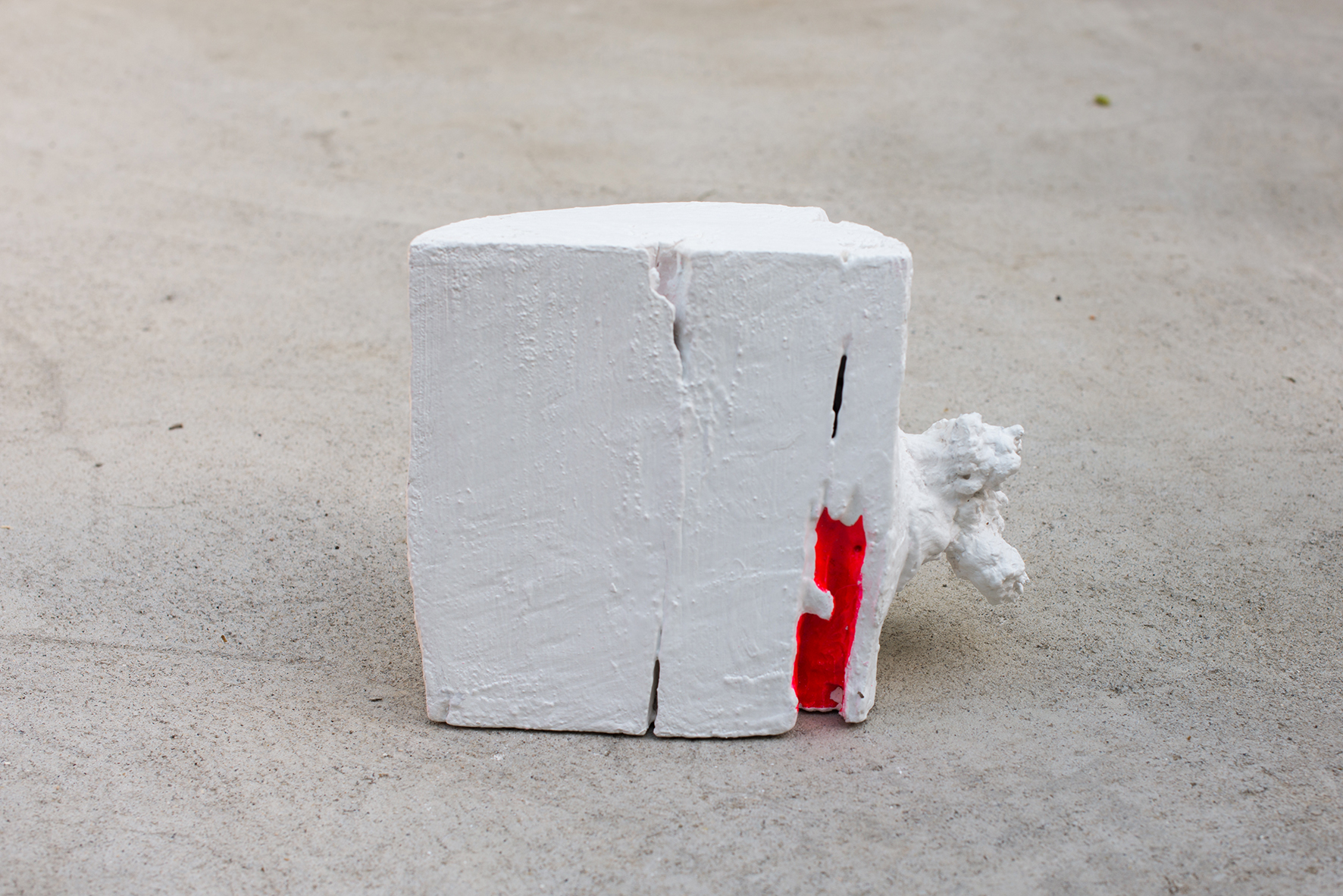
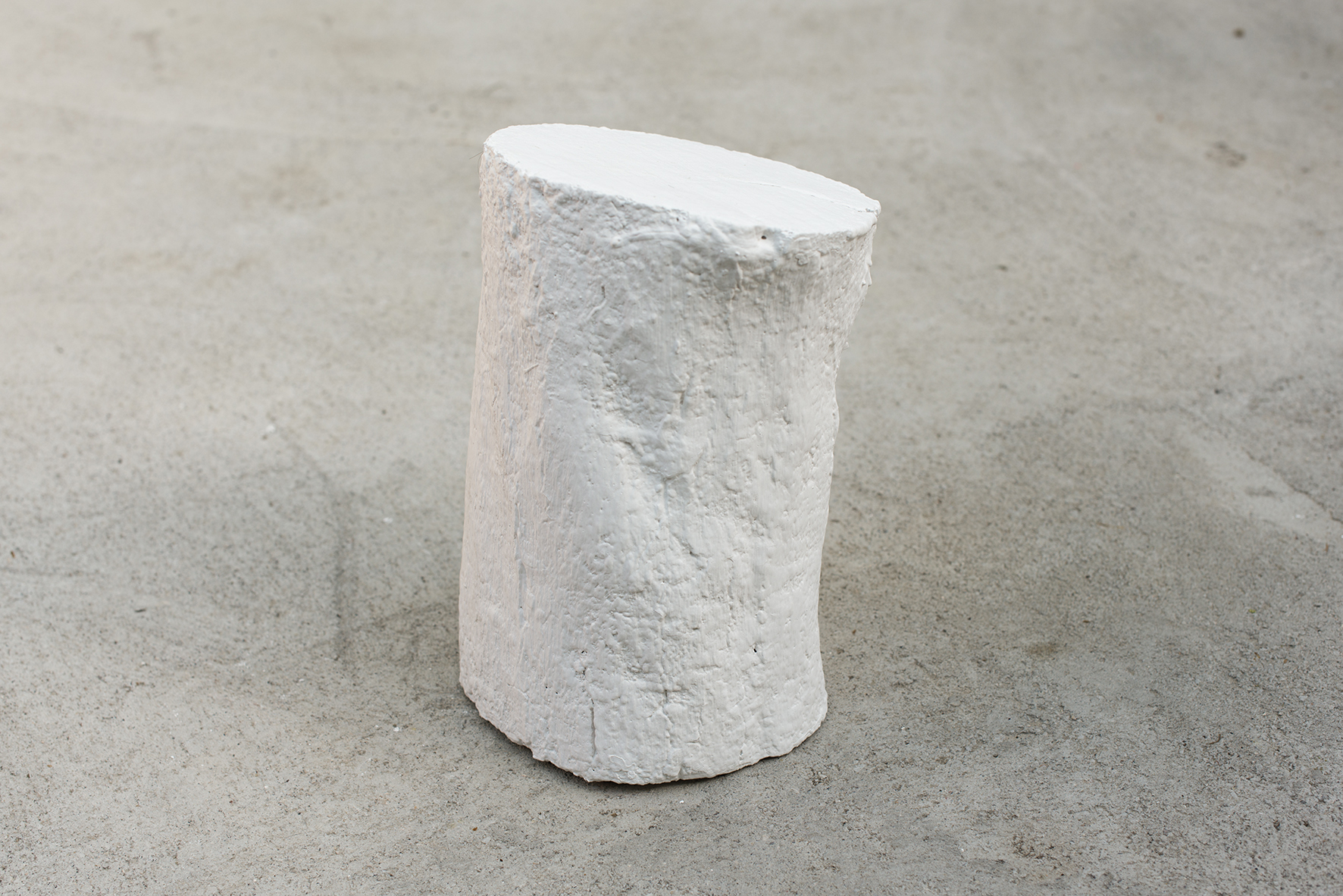
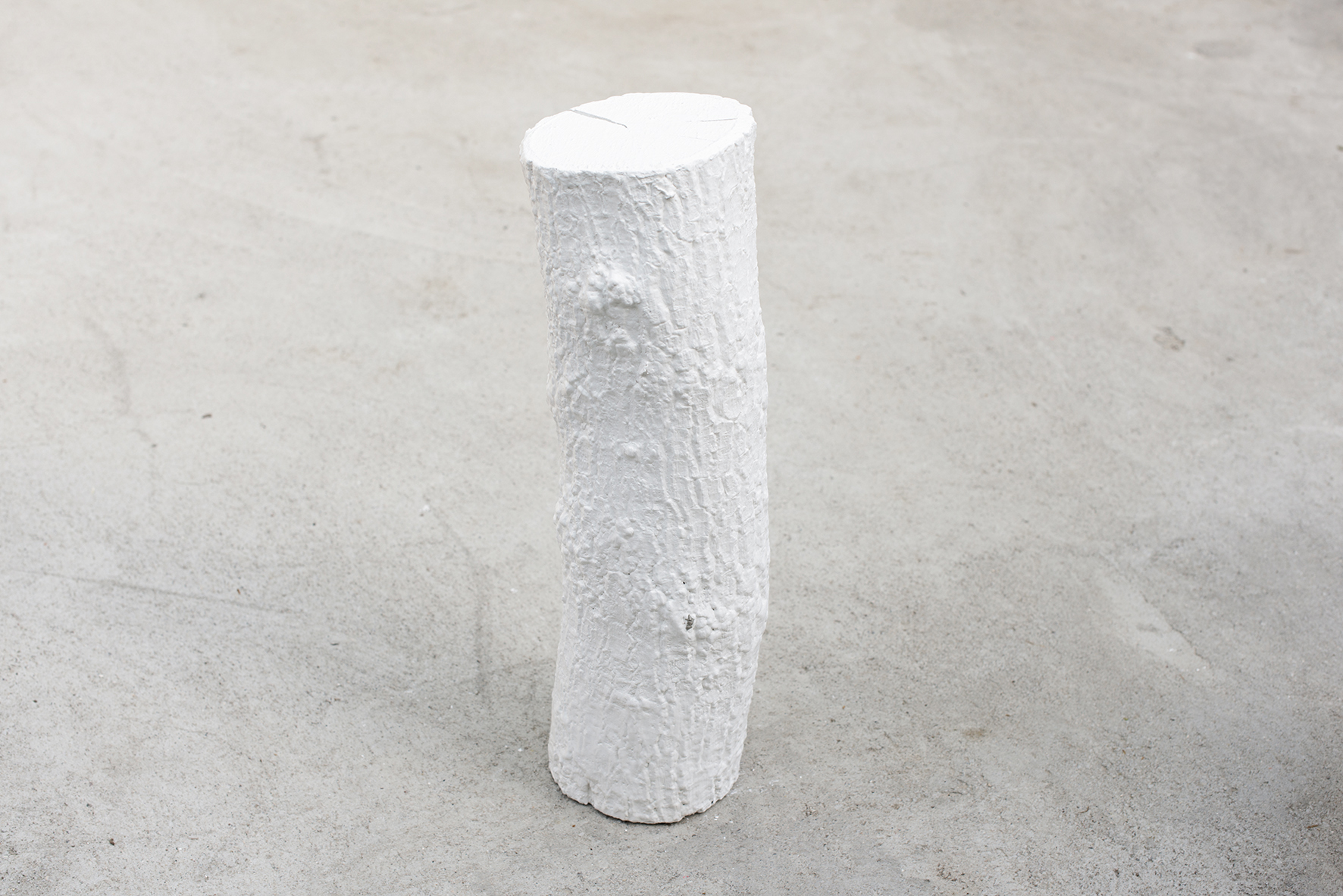
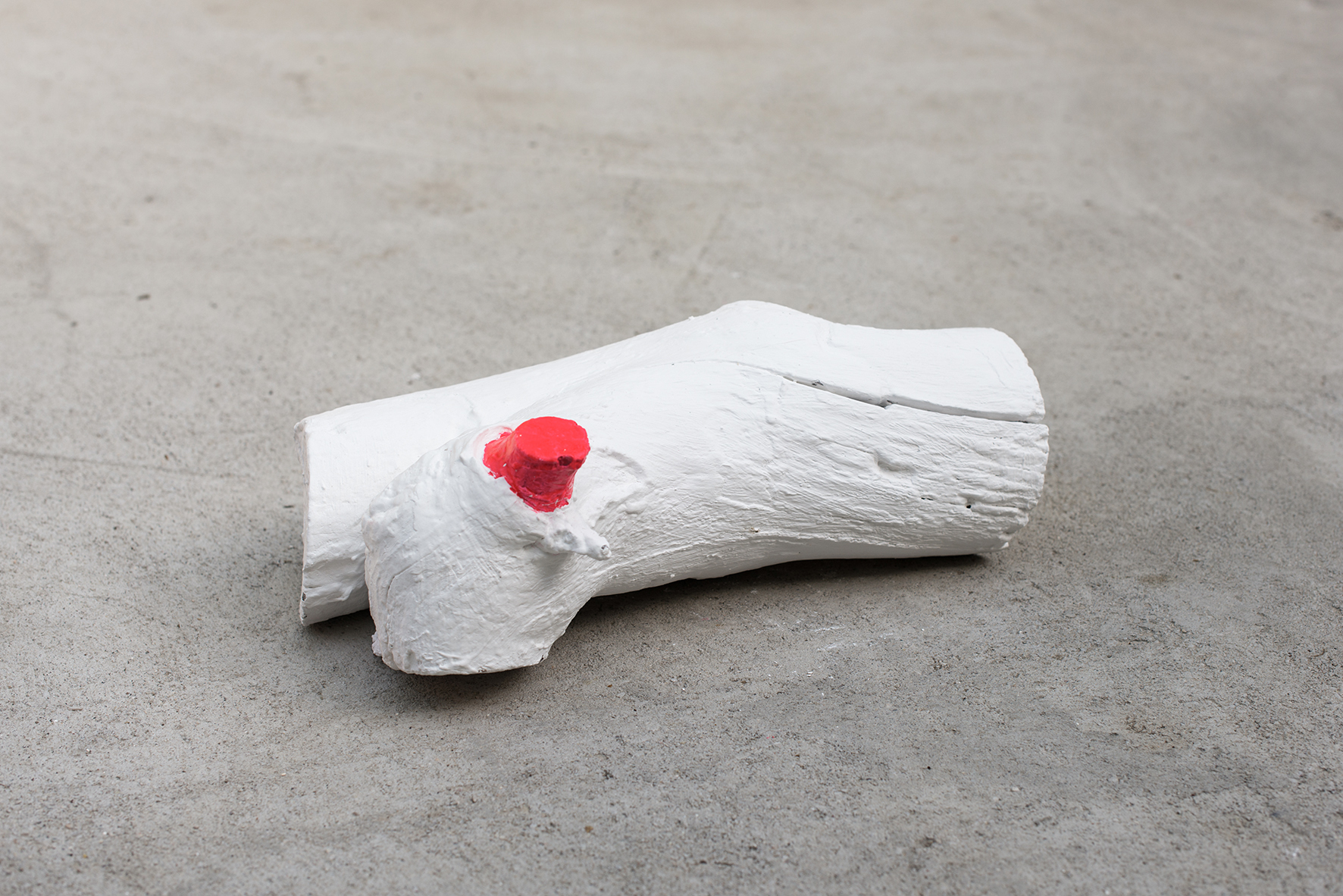
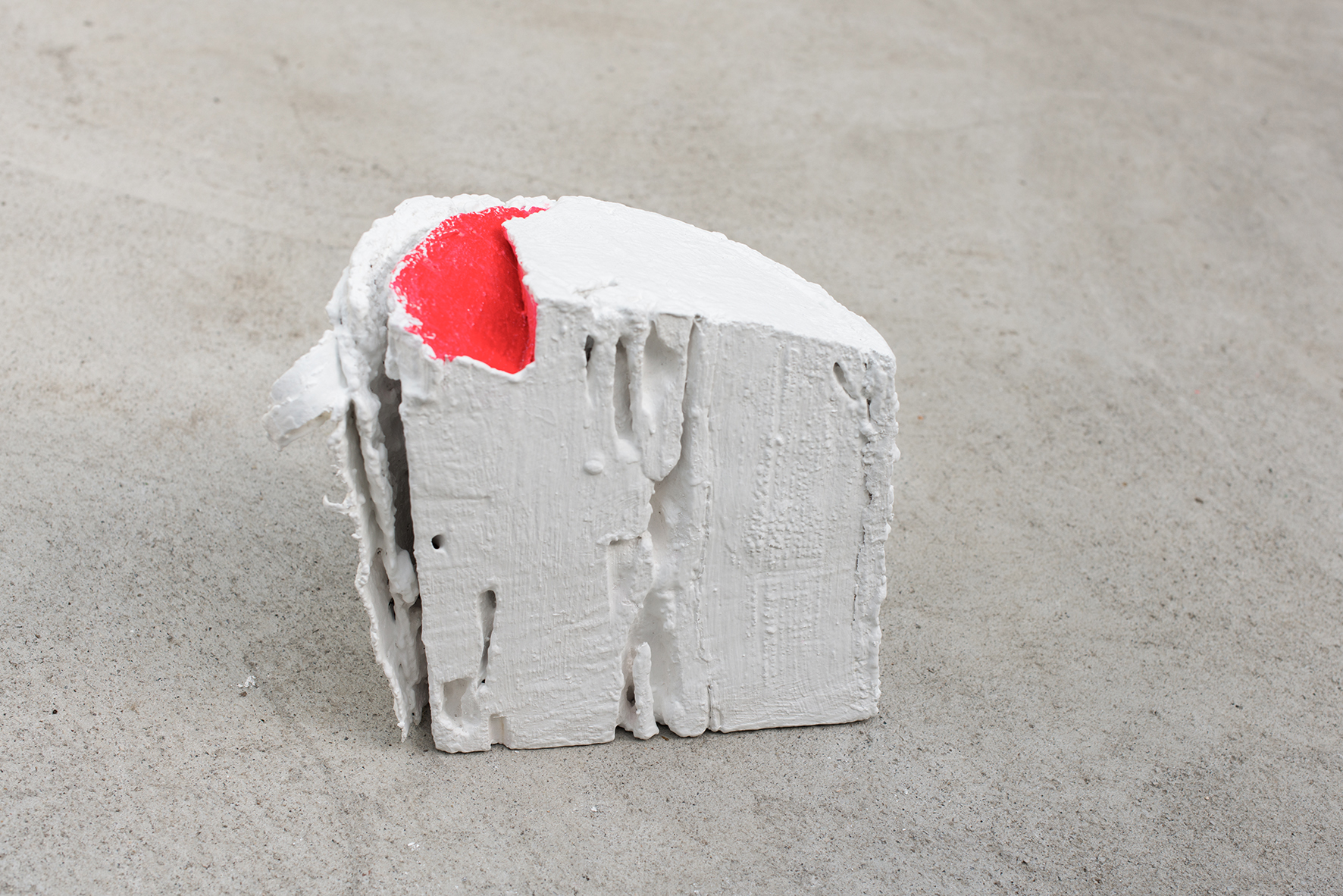
To build a place è composto da 18 pezzi di albero tagliati e verniciati di bianco. Successivamente alcune zone sono state colorate di rosa flou nel punto di taglio. L'intervento attuato vuole proporsi come una modifica, una traccia per evidenziare un momento vissuto. L'idea di marcare quel punto vuole essere in questo lavoro una manifestazione di un passaggio, di un esserci stato.
I segni sugli alberi che in natura servono per percorrere un determinato sentiero, sono riportati in questo lavoro in chiave simbolica; i sentieri non sono quelli di un'escursione ma quelli mentali, quelli che abbiamo percorso finora e che abbiamo intenzione di percorrere.
In semiotica, il segno è definito "qualcosa che sta per qualcos'altro, a qualcuno in qualche modo". È considerato una unità discreta di significato. Fu sant'Agostino il primo a classificare due tipi di segni. I primi sarebbero i segni naturali cioè tutti quei segni che non sono stati creati per significare qualcosa, ma che rimandano ad altri oggetti per esperienza. Poi vi sono quelli artificiali e cioè creati per la comunicazione. Sono detti anche segni intenzionali perché c'è l'intenzione di trasmettere un concetto. In questo caso siamo di fronte ad un segno intenzionale. Il punto di rottura del tronco rivestito ed evidenziato diventa il punto più forte dove è possibile "vedere" anche altro attraverso associazioni mentali che quel determinato intervento riesce a stimolare agli osservatori.
To build a place is made up of 18 pieces of tree cut and painted white. Subsequently some areas were colored in soft pink at the cut point. The implemented intervention is intended as a modification, a trace to highlight a lived moment. The idea of marking that point wants to be in this work a manifestation of a passage, of having been there. The signs on the trees that in nature are used to walk a certain path, are shown in this work in a symbolic key; the paths are not those of an excursion but the mental ones, the ones we have traveled so far and that we intend to walk. In semiotics, the sign is defined as "something that stands for something else, to someone in some way". It is considered a discrete unit of meaning. St. Augustine was the first to classify two types of signs. The first would be the natural signs, that is, all those signs that were not created to mean something, but which refer to other objects through experience. Then there are the artificial ones, that is, created for communication. They are also called intentional signs because there is an intention to convey a concept. In this case we are faced with an intentional sign. The breaking point of the covered and highlighted trunk becomes the strongest point where it is possible to "see" even more through mental associations that that particular intervention is able to stimulate observers.